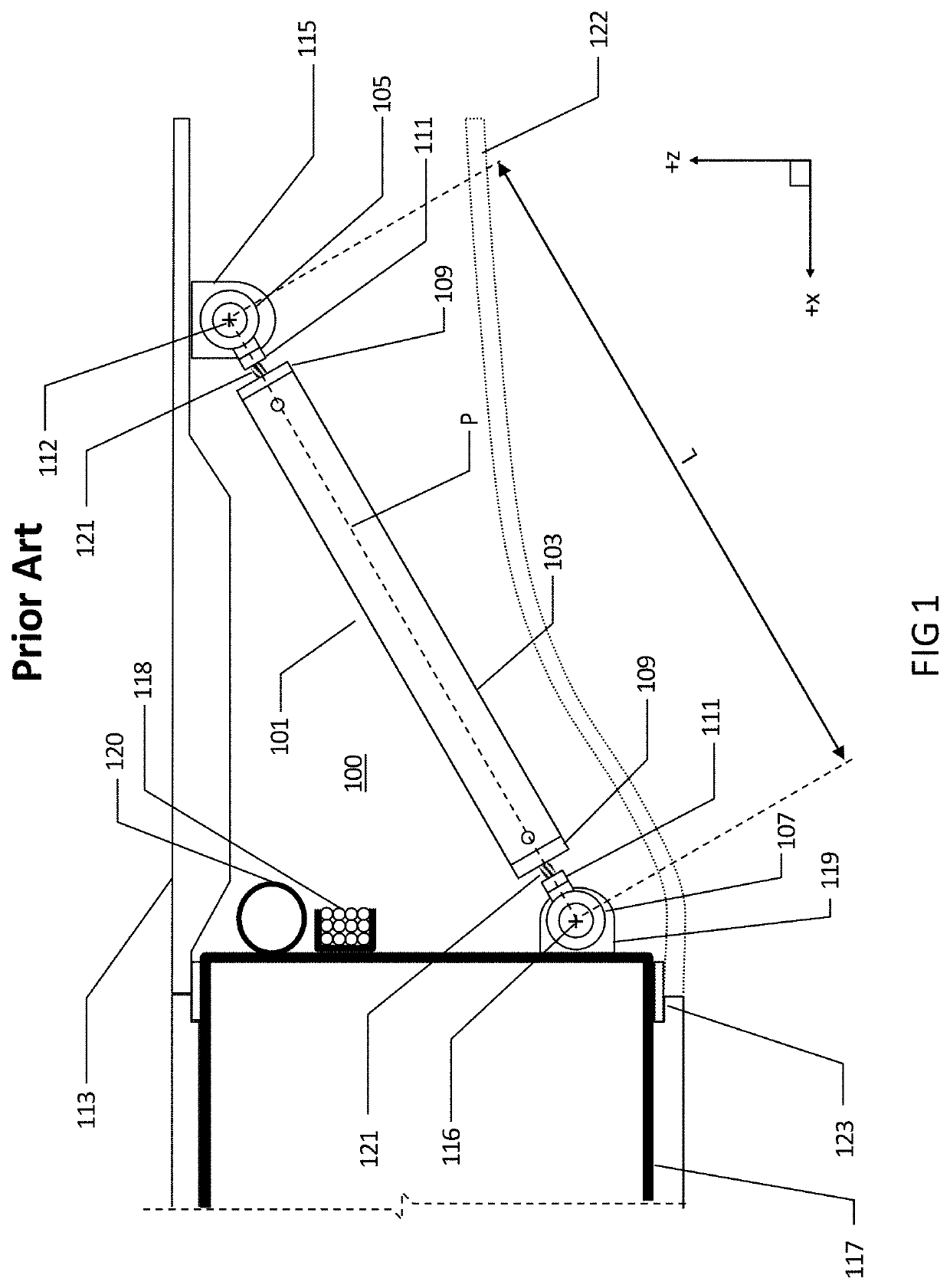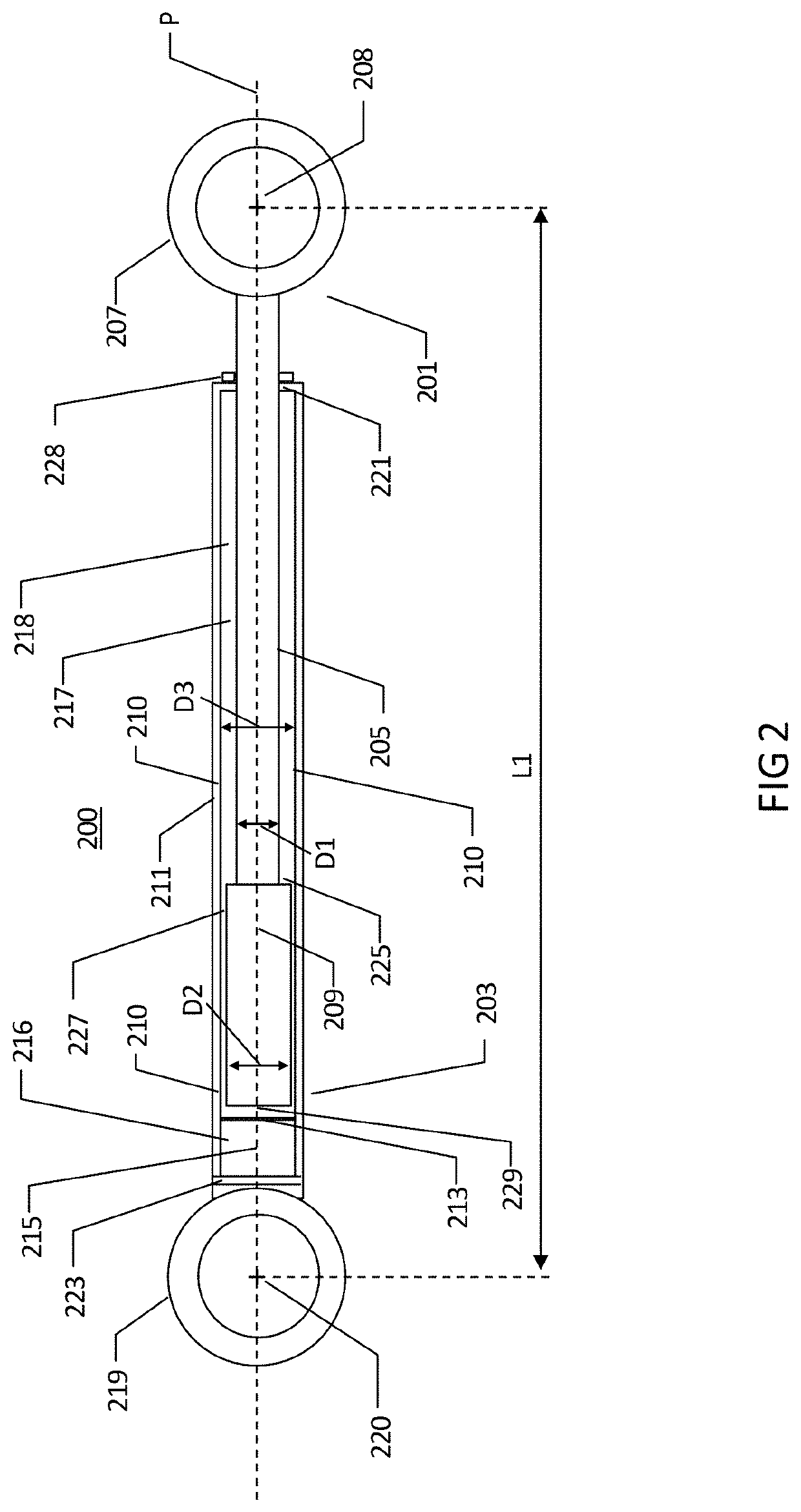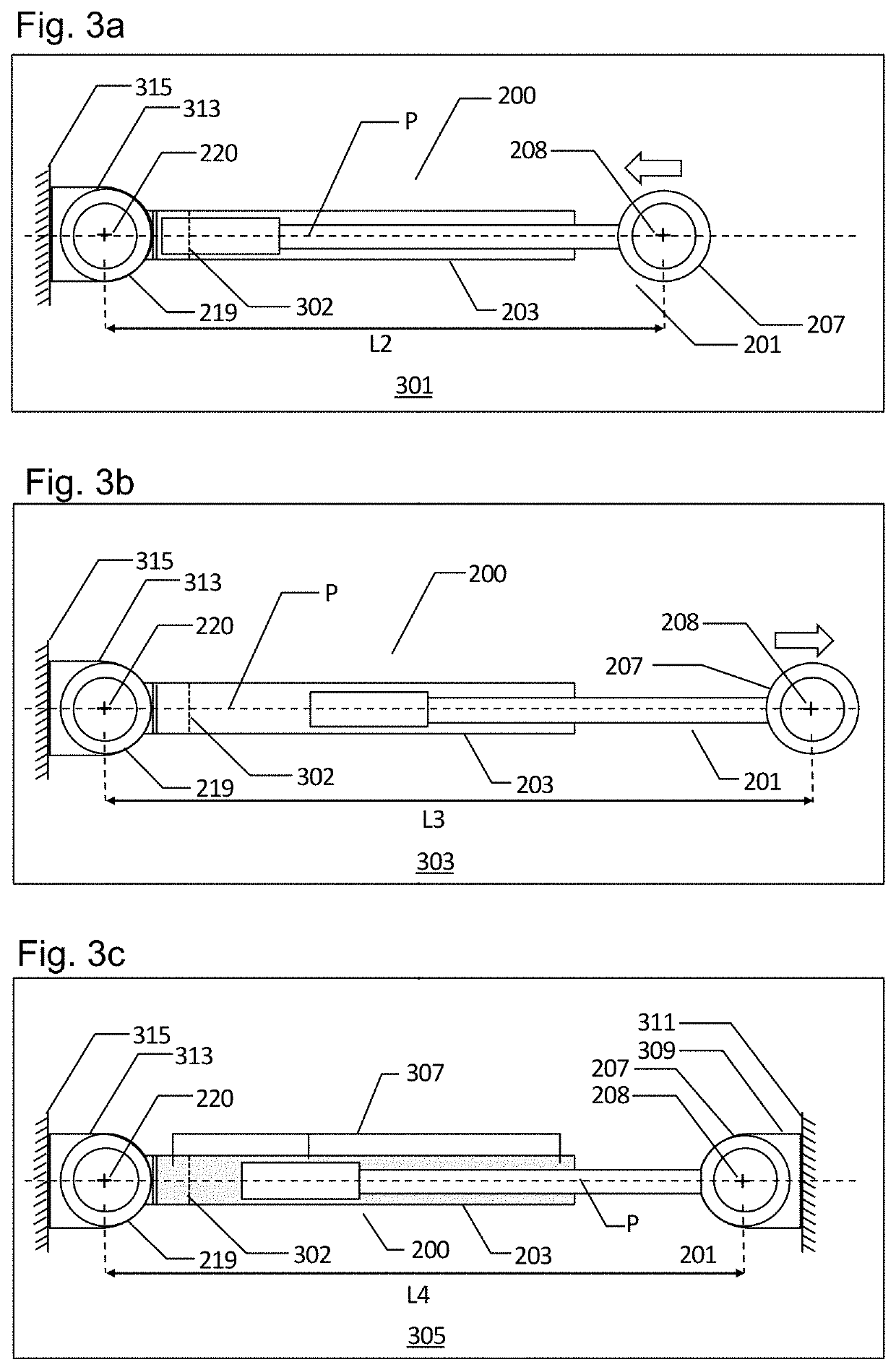Connection rod
a technology of connecting rods and rod bodies, applied in the field of connecting rods, can solve the problems of adversely affecting the degree of adjustability of the connection rod, and limited load capacity of the connection rod itself, so as to reduce installation time and cost, improve material properties of solid reacted materials, and shorten the gel time of chemically reacting
- Summary
- Abstract
- Description
- Claims
- Application Information
AI Technical Summary
Benefits of technology
Problems solved by technology
Method used
Image
Examples
Embodiment Construction
[0031]With reference to FIGS. 2 and 3a-3c, a connection rod 200 comprises a first connection element 201 and a second connection element 203. The primary functions of the connection rod 200 is the same as the prior art connection rod 101 of FIG. 1; that is, to connect components in an assembly and to provide adjustability during installation.
[0032]The first connection element 201 comprises a shaft 205 with a cross-sectional dimension D1 connected to a first connector 207 at a proximal end of the shaft 205. A distal end of the shaft 205 is connected to a piercing body 209 with a cross sectional dimension D2 at a distal end of the shaft 205. For the purpose of this description as a whole, a proximal end means the end of a connection element that is nearest to its point of attachment to a component, and a distal end means the end of a connection element that is furthest to its point of attachment to a component. The shaft 205 and piercing body 209 are cylindrical in cross-section revol...
PUM
 Login to View More
Login to View More Abstract
Description
Claims
Application Information
 Login to View More
Login to View More - R&D
- Intellectual Property
- Life Sciences
- Materials
- Tech Scout
- Unparalleled Data Quality
- Higher Quality Content
- 60% Fewer Hallucinations
Browse by: Latest US Patents, China's latest patents, Technical Efficacy Thesaurus, Application Domain, Technology Topic, Popular Technical Reports.
© 2025 PatSnap. All rights reserved.Legal|Privacy policy|Modern Slavery Act Transparency Statement|Sitemap|About US| Contact US: help@patsnap.com



